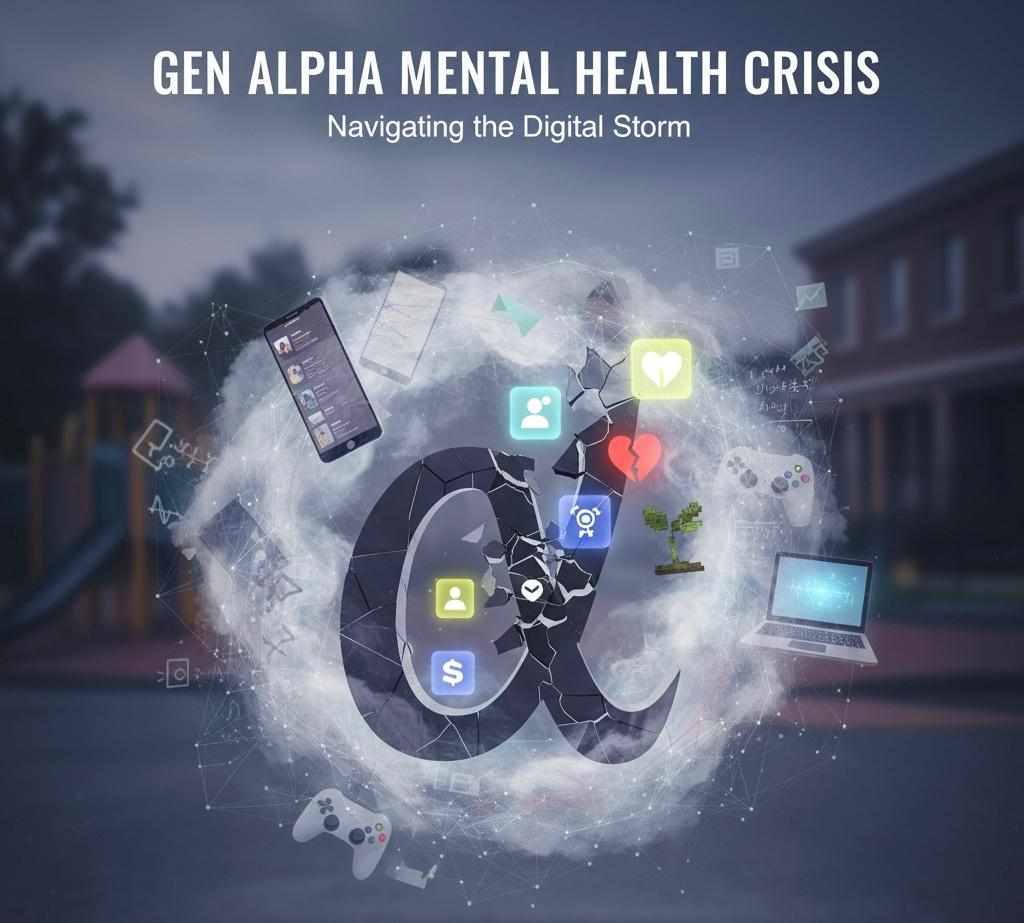Self-harm is a complex and sensitive issue that affects individuals across different age groups, particularly adolescents and young adults. It involves deliberately inflicting pain or injury on oneself as a way to cope with emotional distress, psychological pain, or other overwhelming feelings. While self-harm is not typically a suicide attempt, it is a serious behaviour that can have significant physical and psychological consequences. Understanding the causes, risk factors, and available support strategies is crucial in addressing this issue and providing appropriate care to those affected.
Keywords: self-harm, self-injury, mental health, coping mechanisms, self-harm treatment, psychological support, Australian mental health, adolescent mental health
What is Self-Harm?
Self-harm, also known as self-injury or non-suicidal self-injury (NSSI), refers to the intentional act of causing physical harm to oneself without the intention of ending one’s life. Common methods of self-harm include cutting, burning, scratching, hitting, or engaging in other behaviours that result in bodily harm. Although self-harm is not a direct attempt at suicide, it is often associated with severe emotional pain and can be a symptom of underlying mental health issues (Klonsky, 2007).
In Australia, self-harm is a significant public health concern, particularly among young people. Research indicates that approximately 10% of Australian adolescents engage in self-harm at some point, with higher rates reported among females compared to males (Martin et al., 2010). The behaviour is often a response to emotional distress, and while it may provide temporary relief, it can lead to long-term psychological and physical harm.
Causes and Risk Factors of Self-Harm
Self-harm is typically a coping mechanism for dealing with intense emotional pain, stress, or trauma. It can serve as a way to express feelings that may be difficult to articulate or to gain a sense of control in situations where individuals feel powerless. Several factors contribute to the development of self-harming behaviours, including psychological, social, and environmental influences.
1.1 Psychological Factors
Mental health conditions are a significant risk factor for self-harm. Disorders such as depression, anxiety, borderline personality disorder (BPD), and post-traumatic stress disorder (PTSD) are commonly associated with self-injurious behaviour. Individuals with these conditions may use self-harm as a way to manage overwhelming emotions, numb feelings of emptiness, or punish themselves for perceived failures (Nock, 2009).
Additionally, self-harm is often linked to low self-esteem, feelings of worthlessness, and a lack of effective coping mechanisms. The behaviour can become a maladaptive way to deal with negative emotions, providing a temporary sense of relief or distraction from emotional pain.
1.2 Social and Environmental Factors
Social and environmental factors also play a significant role in the onset of self-harming behaviours. Experiences of trauma, such as physical or sexual abuse, bullying, or neglect, can increase the likelihood of self-harm. These traumatic experiences can lead to feelings of shame, guilt, or anger, which individuals may struggle to process in healthy ways (Gratz, 2003).
Social isolation, family conflict, and peer pressure are additional factors that can contribute to self-harm. For some individuals, self-injury may be a way to communicate distress or a cry for help when they feel unsupported or misunderstood by those around them.
1.3 Cultural and Societal Influences
Cultural and societal influences, including the portrayal of self-harm in media and popular culture, can also impact the prevalence of self-harming behaviours. Exposure to self-harm through social media, television, or online forums may normalise the behaviour or present it as a viable coping mechanism. This is particularly concerning among adolescents, who may be more susceptible to peer influence and media messages (Lewis et al., 2011).
The Risks and Consequences of Self-Harm
Self-harm carries several risks and potential consequences, both physical and psychological. Understanding these risks is important for recognising the seriousness of the behaviour and the need for appropriate intervention.
2.1 Physical Risks
The physical risks of self-harm vary depending on the method used, but they can include infections, scarring, nerve damage, and, in severe cases, accidental death. Repeated self-injury can lead to chronic pain or disability, and the visible scars left by self-harm can be a source of shame or stigma for the individual (Whitlock et al., 2013).
Additionally, while self-harm is not typically a suicide attempt, it is a strong predictor of future suicidal behaviour. Individuals who engage in self-harm are at an increased risk of suicide, particularly if their self-injury is severe, persistent, or co-occurs with other mental health conditions (Hawton et al., 2015).
2.2 Psychological Risks
Psychologically, self-harm can perpetuate a cycle of emotional distress. While the behaviour may provide temporary relief, it often leads to feelings of shame, guilt, and isolation, which can exacerbate the underlying emotional issues. Over time, individuals may become reliant on self-harm as their primary coping mechanism, making it difficult to develop healthier ways of managing emotions (Klonsky, 2007).
Self-harm can also impact relationships with family, friends, and peers. Loved ones may struggle to understand the behaviour, leading to feelings of frustration, fear, or helplessness. This can create additional stress and strain on relationships, further isolating the individual who self-harms.
Treatment and Support for Individuals Who Self-Harm
Effective treatment and support are crucial for individuals who engage in self-harm. The goal of treatment is not only to stop the behaviour but also to address the underlying emotional issues and develop healthier coping strategies. A combination of psychological therapies, medical care, and social support is often necessary for comprehensive treatment.
3.1 Psychological Therapies
Several psychological therapies have been shown to be effective in treating self-harm. Cognitive Behavioural Therapy (CBT) is one of the most widely used approaches, helping individuals identify and change the thought patterns and behaviours that contribute to self-harm. CBT can also teach problem-solving skills and emotional regulation techniques, which are essential for managing distress without resorting to self-injury (Hawton et al., 2015).
Dialectical Behaviour Therapy (DBT) is another evidence-based treatment that is particularly effective for individuals with BPD or chronic self-harm. DBT combines cognitive-behavioural techniques with mindfulness practices, helping individuals build tolerance to emotional distress and improve their interpersonal relationships (Linehan, 1993).
In addition to individual therapy, group therapy and family therapy can provide valuable support. Group therapy offers a space for individuals to share their experiences and learn from others, while family therapy can help address underlying family dynamics and improve communication.
3.2 Medical and Emergency Care
In cases of severe self-harm, immediate medical care may be necessary to treat injuries and prevent complications. Healthcare providers should approach self-harm with empathy and without judgment, ensuring that the individual receives both physical and emotional care. In some cases, hospitalisation or intensive outpatient programs may be required to stabilise the individual and provide a safe environment for recovery (Gunnell et al., 2014).
3.3 Social Support and Peer Networks
Social support is a critical component of recovery from self-harm. Friends, family members, and peers can play a vital role in providing emotional support, encouragement, and understanding. Building a strong support network can help individuals feel less isolated and more connected to others, which is important for long-term recovery.
Peer support groups, both in-person and online, can also be valuable for individuals who self-harm. These groups offer a safe space to share experiences, receive support from others who have faced similar challenges, and learn new coping strategies.
Prevention and Early Intervention
Preventing self-harm and intervening early when it occurs are key strategies for reducing the prevalence and impact of self-harming behaviours. This involves raising awareness, promoting mental health education, and providing early access to mental health services.
4.1 Mental Health Education
Mental health education in schools and communities is essential for preventing self-harm. By teaching young people about emotional regulation, healthy coping strategies, and the risks of self-harm, educators can equip them with the tools they need to manage stress and emotional pain. Mental health education also helps reduce stigma, making it easier for individuals to seek help when they need it (Zubrick et al., 2017).
4.2 Early Identification and Intervention
Early identification of self-harm is crucial for providing timely support and preventing the behaviour from escalating. Parents, teachers, and healthcare providers should be aware of the warning signs of self-harm, such as unexplained injuries, wearing long sleeves or pants to cover scars, and withdrawing from social activities. When self-harm is identified, it is important to approach the individual with compassion and connect them with appropriate mental health services (Jacobson & Gould, 2007).
4.3 Access to Mental Health Services
Improving access to mental health services is essential for preventing and treating self-harm. This includes increasing the availability of psychological therapies, reducing wait times for mental health appointments, and providing affordable or free services for those in need. Telehealth and online counselling services can also help bridge gaps in access, particularly for individuals in rural or remote areas (Australian Government Department of Health, 2021).
Conclusion
Self-harm is a serious and complex behaviour that requires a comprehensive approach to treatment and support. Understanding the psychological, social, and environmental factors that contribute to self-harm is essential for developing effective prevention and intervention strategies. By providing access to evidence-based therapies, medical care, and social support, we can help individuals who self-harm find healthier ways to cope with their emotions and improve their overall well-being.
In Australia, continued efforts to raise awareness, reduce stigma, and improve access to mental health services are critical for addressing the issue of self-harm and supporting those affected.
References
- Australian Government Department of Health. (2021). Mental Health Services in Australia. Retrieved from Australian Government Department of Health website.
- Gunnell, D., Bennewith, O., Peters, T. J., House, A., & Hawton, K. (2014). The Epidemiology and Prevention of Suicide by Hanging: A Systematic Review. International Journal of Epidemiology, 34(2), 433-442.
- Gratz, K. L. (2003). Risk Factors for and Functions of Deliberate Self-Harm: An Empirical and Conceptual Review. Clinical Psychology: Science and Practice, 10(2), 192-205.
- Hawton, K., Saunders, K. E., & O’Connor, R. C. (2015). Self-Harm and Suicide in Adolescents. The Lancet, 379(9834), 2373-2382.
- Jacobson, C. M., & Gould, M. (2007). The Epidemiology and Phenomenology of Non-Suicidal Self-Injurious Behavior among Adolescents: A Critical Review of the Literature. Archives of Suicide Research, 11(2), 129-147.
- Klonsky, E. D. (2007). The Functions of Deliberate Self-Injury: A Review of the Evidence. Clinical Psychology Review, 27(2), 226-239.
- Lewis, S. P., Heath, N. L., Denis, J. M., & Noble, R. (2011). The Scope of Nonsuicidal Self-Injury on YouTube. Pediatrics, 127(3), e552-e557.
- Linehan, M. M. (1993). Cognitive-Behavioral Treatment of Borderline Personality Disorder. Guilford Press.
- Martin, G., Swannell, S., Hazell, P., Harrison, J., & Taylor, A. (2010). Self-Injury in Australia: A Community Survey. Medical Journal of Australia, 193(9), 506-510.
- Nock, M. K. (2009). Why Do People Hurt Themselves? New Insights into the Nature and Functions of Self-Injury. Current Directions in Psychological Science, 18(2), 78-83.
- Whitlock, J., Muehlenkamp, J., & Eckenrode, J. (2013). Variation in Nonsuicidal Self-Injury: Identification and Features of Latent Classes in a College Population of Emerging Adults. Journal of Clinical Child & Adolescent Psychology, 37(4), 725-735.
- Zubrick, S. R., Hafekost, J., Johnson, S. E., Lawrence, D., Saw, S., & Sawyer, M. G. (2017). The Impact of School-Based Mental Health Promotion on Student Emotional and Behavioral Problems. Journal of Adolescent Health, 61(4), 436-442.
How to get in touch
If you or your NDIS participant need immediate mental healthcare assistance, feel free to get in contact with us on 1800 NEAR ME – admin@therapynearme.com.au.







